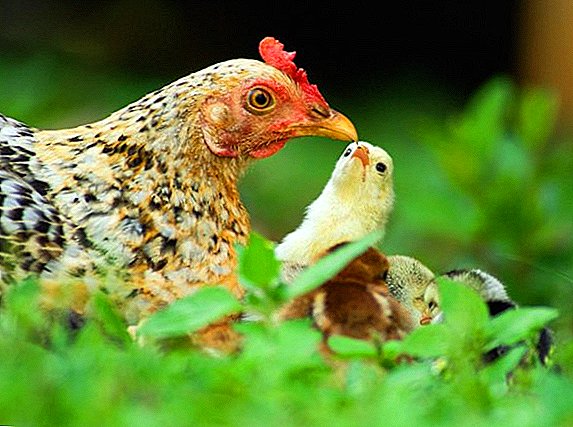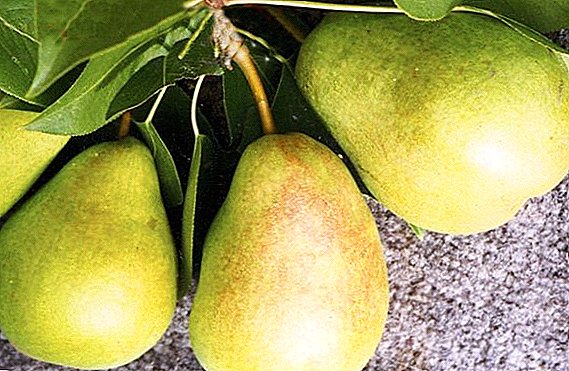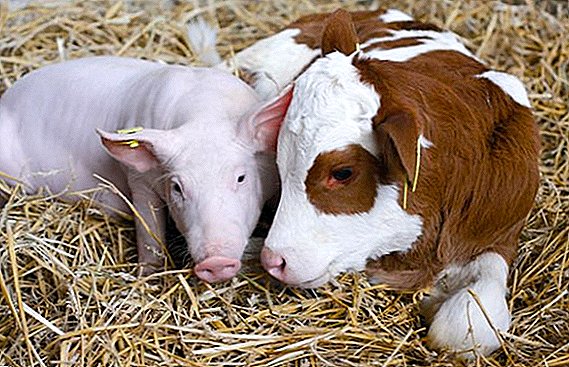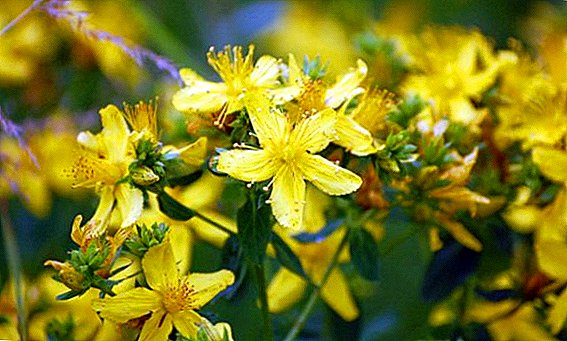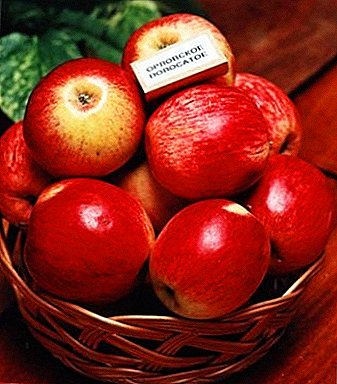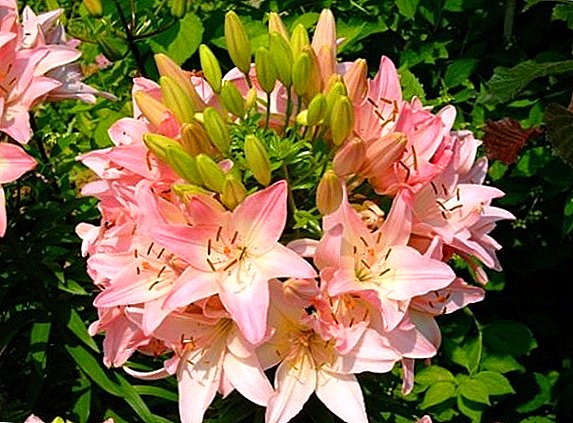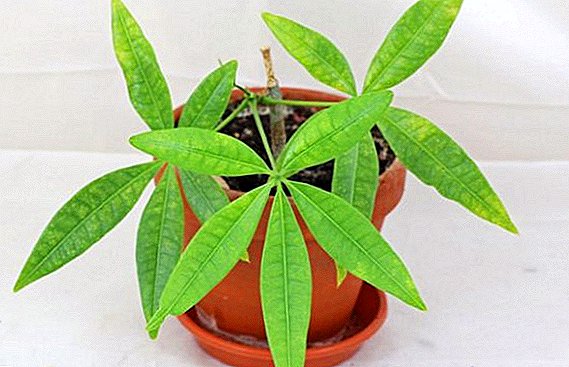 Pachira refers to a type of plant that is little talked about. However, he has everything he needs to become a real highlight of the home greenhouse.
Pachira refers to a type of plant that is little talked about. However, he has everything he needs to become a real highlight of the home greenhouse.
Unusual and bright appearance will not leave indifferent either an avid lover of home flowers, or a simple man in the street. To date, this plant is not enough reliable information.
Despite its uniqueness, this relative of baobab and breadfruit is only trying to gain popularity and attention among domestic gardeners and flower beds. In this article we will look at what a pachira flower is, and learn how to properly care for this plant.
Short description
Pakhira belongs to the Malvova family of plants, the Bombax subfamily. This species is a typical representative of the humid tropical zone of South and Central America.
Also, wild representatives of the species can be found in areas of Africa and India that are far from human activity. The closest to the species is considered to be baobab and breadfruit.
Pachyras include more than 45 representatives, among which plants are found even with edible fruits. 
You can diversify your homemade oranjarea with such indoor plants as cyclamen, fern, pachistachis, plumeria, kalanchoe, fittonia, cactus, agave, maranth.
In the natural habitat of the pachira has the appearance of a tree-like plant, whose height can reach up to 20 meters, but under room conditions this species grows slowly, and its length does not exceed 3 meters.
The barrel is similar in shape to an ordinary bottle: it is wide at the bottom and tapers at the top. Between the bark and woody tissue of the plant is a special formation of tissue, which helps to store moisture in large quantities.
The trunk of the pachira is covered with a huge number of smooth leaves that grow on elongated cuttings. The lamina of representatives of the species resembles a chestnut leaf in its form, therefore, this plant is often called the Guiana chestnut.  The pahir bloom period begins in early June and can last until the first half of November, but with proper care, indoor species can bloom much longer.
The pahir bloom period begins in early June and can last until the first half of November, but with proper care, indoor species can bloom much longer.
During flowering, some representatives shed their foxes, but this does not happen at room conditions.
Flowers have a diameter of up to 10 centimeters and are located on a kind of process up to 35 cm long. Pakhir has no restrictions on the color spectrum of the flower itself.
Did you know? The name "Pachira" (pachira) was given to this plant in 1775 thanks to the French scientist Jean-Baptiste Oble.
You can find from white to pink or greenish colors. Characteristic of the flowers of the plant is the presence of a huge number of stamens. The smell of the flower is pleasant and resembles vanilla.  After flowering the plant ripens the fruit - a nut, in which there are about 20 seeds. In many wild species, the fruits are absolutely edible. They make flour, from which they bake flavored bread, and even make drinks that resemble chocolate to taste.
After flowering the plant ripens the fruit - a nut, in which there are about 20 seeds. In many wild species, the fruits are absolutely edible. They make flour, from which they bake flavored bread, and even make drinks that resemble chocolate to taste.
In addition, without harm to health, they can be used as food in boiled, fried or raw.
Did you know? Many inhabitants of our latitudes daily meet with pakhira in everyday life. Seeds of this plant are used as a natural filler for pillows.
Indoor species are usually grown as a single plant, but some growers grow a flower with a complex, twisted stem. To do this, plant several seedlings in one pot, which during growth gradually intertwine with each other.
The result is an amazingly beautiful twisted trunk with a leafy cap at the top.
Did you know? In the people, this plant is known under the names "monetary" or "Chinese tree".
Conditions and features of care
To grow a full-fledged pakhira at home is not the most difficult task. This type of particular whimsicality does not differ, however, due to the fact that each flower is a typical representative of tropical latitudes, caring for a plant requires additional attention.
This is especially important with proper lighting, temperature and watering.
Lighting
All pahir representatives are distinguished by a special love of sunlight. The plant tolerates direct sunlight for a long time.  However, the most acceptable would be scattered light radiation. Therefore, for room pachyry it is best to arrange a place on the southern window-sill, but be sure to provide shelter from the direct rays of the sun in the daytime.
However, the most acceptable would be scattered light radiation. Therefore, for room pachyry it is best to arrange a place on the southern window-sill, but be sure to provide shelter from the direct rays of the sun in the daytime.
On the western and eastern side of the flower also grows safely, but it is strictly necessary to avoid the northern part of the house. Here the plant will experience a lack of lighting, and flower growth will be significantly slowed down.
Important! With a lack or overabundance of lighting plants loses its decorative significance. Therefore it is important to achieve acceptable for the plant. optimum.In hot summertime the pachir needs to be taken out to fresh air. Find a suitable place without direct sunlight, drafts and access to excessive moisture. The ideal option would be a glazed balcony or shed.
It is necessary to accustom the flower to new lighting conditions gradually, for this purpose it is periodically wrapped in a new place. Otherwise, under the influence of aggressive ultraviolet, the pachirs turn yellow and fall leaves.
Temperature
In spring and summer, the ideal temperature for this indoor plant will be + 20-25 degrees Celsius. With the onset of winter cold, the air temperature can be reduced to +18 degrees.  At this time, it is important to pay attention to the location of the flower. Pahir is strictly forbidden to leave near the batteries and other heating elements, as well as in a draft, as this may cause her death.
At this time, it is important to pay attention to the location of the flower. Pahir is strictly forbidden to leave near the batteries and other heating elements, as well as in a draft, as this may cause her death.
Watering
In the warm season, the plant needs abundant watering. This is especially important during the period of active growth of the flower, so the soil in the pot should not dry out. In winter, watering pachyras is minimized, as the plant can get sick and begin to rot.
The signal of a lack of moisture in the soil in the winter becomes a slightly dry crust of the substrate in the pot. Soft water at room temperature is used for irrigation, however, rainwater will be the best choice.
Air humidity
Pachira does not need additional humidification of the air, the plant feels great in our dry climate. But spraying the leaves in the morning and evening will only have a positive effect on the development of the flower and its general well-being.
To do this, you can use either plain tap water at room temperature or settled rainwater. 
Top dressing
Fertilizer in the pot is recommended to make according to the general recommendations for feeding tropical species of plants. During the period of active growth (early spring - late summer), pachyra needs additional nutrients, for this, twice a month, it is fed with complex fertilizers for houseplants.
The dosage should be in the mean of the manufacturer’s recommended instructions.
Transplant: pot and soil
Actively growing indoor pachyrs need to be transplanted annually. The best period for this process is the beginning - the middle of spring. At this time, the plant organism is at rest, but is preparing for active cell division.
An adult tree is rarely transplanted, as this procedure is carried out for an exceptional need, but it still takes place. Therefore, each owner of the flower needs to know how to transplant a room pachira.
To do this, the plant is moved to a pot, which must be larger than the previous one by an average of 2-5 centimeters in diameter. For transplantation, it is recommended to use a non-deep pot, as this may adversely affect the overall development of the flower.  Medium-sized gravel is poured at the bottom of the tank as drainage, and then a specially prepared soil mixture is poured.
Medium-sized gravel is poured at the bottom of the tank as drainage, and then a specially prepared soil mixture is poured.
The substrate, optimum for use, should consist of equal parts of the sheet and sod earth, sand. Also, it is necessary to add brick chips in the amount of 0.5 parts.
If you do not have the time and opportunity to prepare the soil for the pot yourself, as an option, you can use a ready-made soil mixture for growing dracen and palm trees.
Important! In preparing the soil mixture for pachyras, in no case use black soil or other nutrient rich soils, since only a poor coarse-grained substrate is ideal for this flower.
After transplantation, it is recommended to improve the crown of this miniature tree, since there is nothing difficult to trim a pachira.
This procedure is performed with ease as a special garden shears, and simple stationery. In order to form a graceful crown, cutting is recommended, starting with the main branch.  After it is cut off, lateral ramifications appear, with the help of which the characteristic tree hat is formed in the form of a ball or an oval.
After it is cut off, lateral ramifications appear, with the help of which the characteristic tree hat is formed in the form of a ball or an oval.
Diseases and pests: prevention and treatment
In the natural habitat of all representatives of the pahir waiting for a lot of pests and various kinds of danger. We give below the most common diseases of this type, as well as describe the detailed steps to eliminate them.
Often, pahir owners observe rotting of the roots or the stem of a flower. The cause of this disease is excessive soil moisture. To eliminate the problem, the plant is dug out, then the affected areas are carefully cut off.
Next, you need to withstand the flower for some time to dry the oozing areas, after which it is again planted in the soil. The best prevention of putrefactive processes is strict control of the amount of moisture.  Yellowish spots on the leaves of the flower indicate parasitism on the pachyr of the red spider mite. The insect settles on the back of the leaf and feeds on the sap of the plant.
Yellowish spots on the leaves of the flower indicate parasitism on the pachyr of the red spider mite. The insect settles on the back of the leaf and feeds on the sap of the plant.
To combat this pest use drugs "Aktara" or "Aktellik." Prevention of insect damage to this flower is a frequent inspection of the leaves for the presence of the parasite, as well as maintaining optimal moisture.
The dying off of whole parts of the room pachyra may indicate parasitization of the scale insects on it; this insect sucks the sap from the plant, which can lead to its death. To combat the shield use the same preparations according to the instructions.
For the prevention of development on the plant of this insect conduct a weekly inspection. Also, it does not interfere with occasional airing of the room in which the flower is located.
Home reproduction
Increasing the number of flower pakhira is not difficult. The reproduction of these plants is carried out in two ways: by cuttings or by growing from seeds.
Cuttings
It is best to propagate this species by cuttings in the second half of August, otherwise it will not be possible to root the flower fragments immediately.
The cut-out reproductive material is placed in a highly moist substrate prepared from equal parts of sand and peat, after which everything is covered with a film to maintain the greenhouse effect.  The temperature under the oilcloth should not fall below +20 degrees. Approximately in 14-20 days the cuttings take root, after which they are ready for planting in the main substrate.
The temperature under the oilcloth should not fall below +20 degrees. Approximately in 14-20 days the cuttings take root, after which they are ready for planting in the main substrate.
Many fans of indoor flowers prefer to root this plant in plain water, in this case, before the roots appear, it is necessary to ensure that the cutting does not rot.
Important! Cut the cuttings only with the heel, otherwise the rooting will be impossible.
Growing from seed
In room conditions pachyras are perfectly cultivated with the help of seeds, but do not forget that with each week their germination rate drops significantly, therefore, only fresh seed should be germinated.  The best time for sowing is spring. To get healthy sprouts, seeds are sown in a container with a substrate, and then they are carefully sprinkled.
The best time for sowing is spring. To get healthy sprouts, seeds are sown in a container with a substrate, and then they are carefully sprinkled.
Moisturize the soil, cover with polyethylene or glass and put on a well-lit place, while the temperature must be maintained within + 20-25 degrees. After 20-30 days, young shoots are transplanted into the substrate for mature flowers and watered abundantly for about a week.
Pakhira is an ideal option for the indoor plant lover who wants to grow not just a flower, but a real work of art on his windowsill.  This graceful and unpretentious plant will help to develop both a serious aesthetic taste and a true understanding of the correct creation of a flower arrangement in a short period of time.
This graceful and unpretentious plant will help to develop both a serious aesthetic taste and a true understanding of the correct creation of a flower arrangement in a short period of time.



